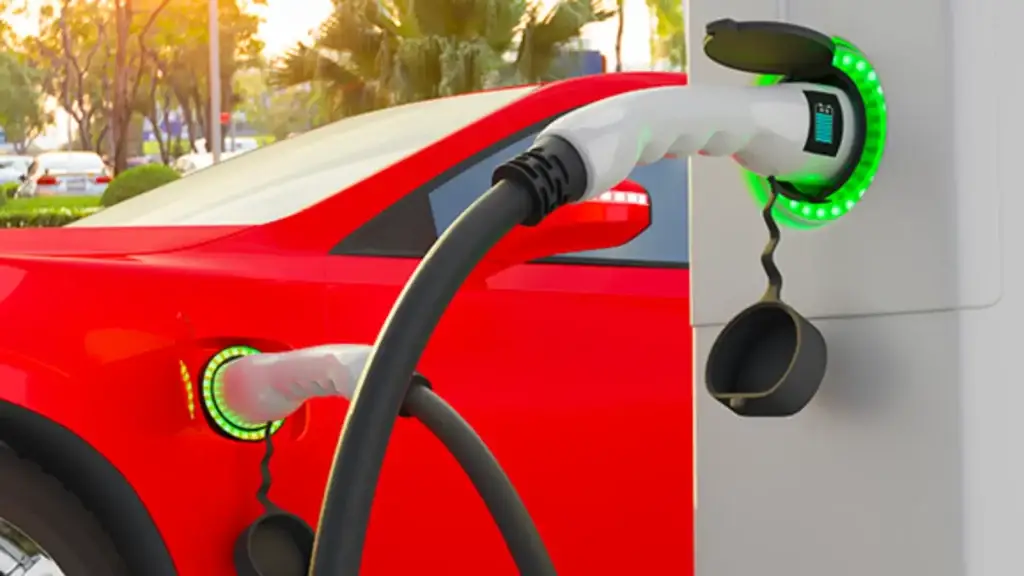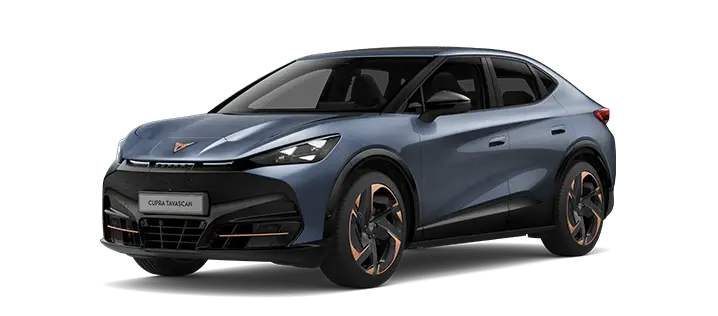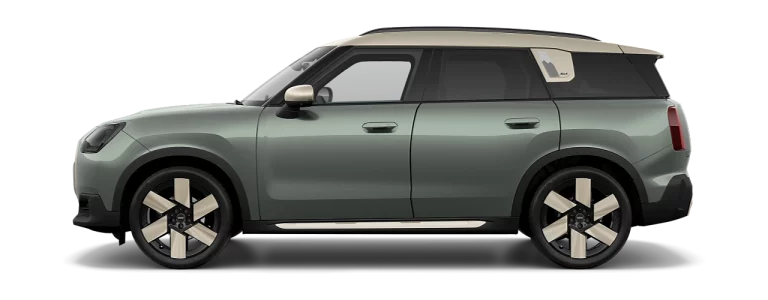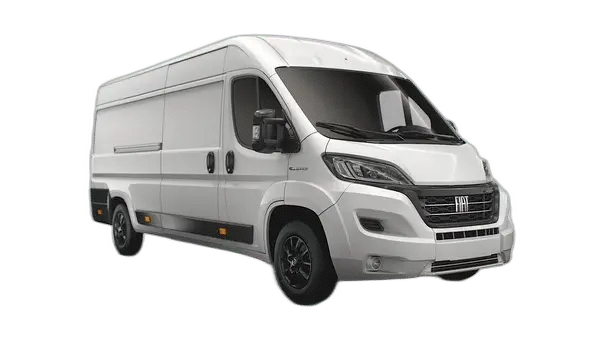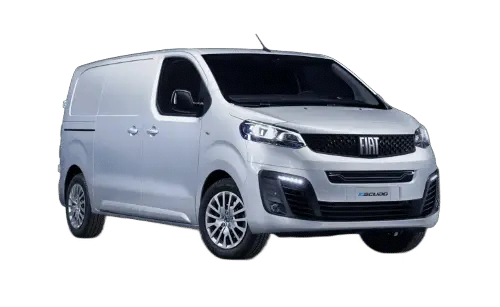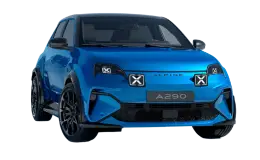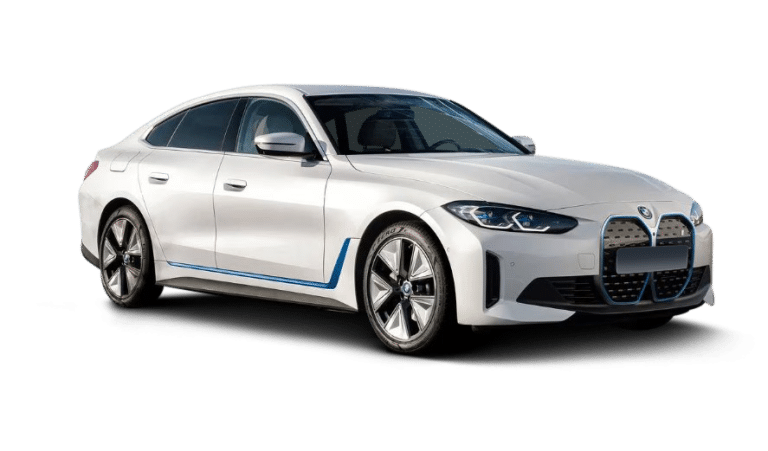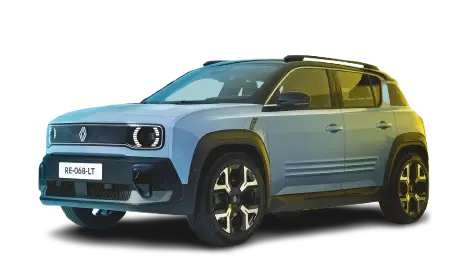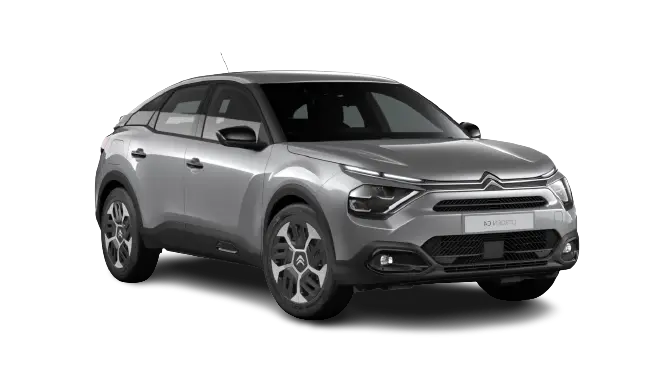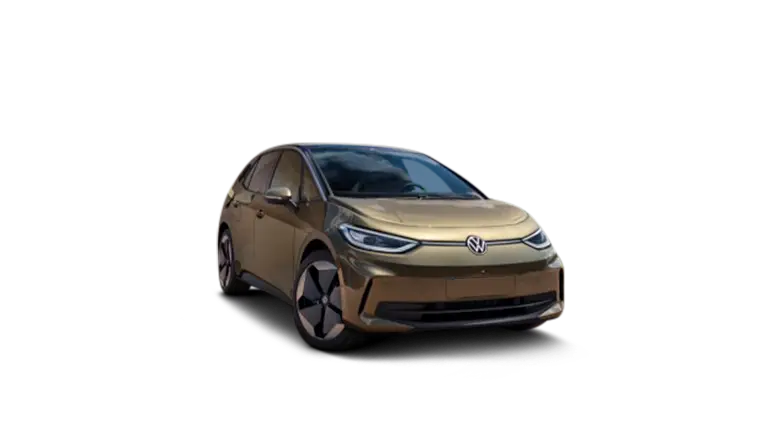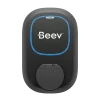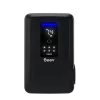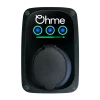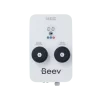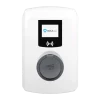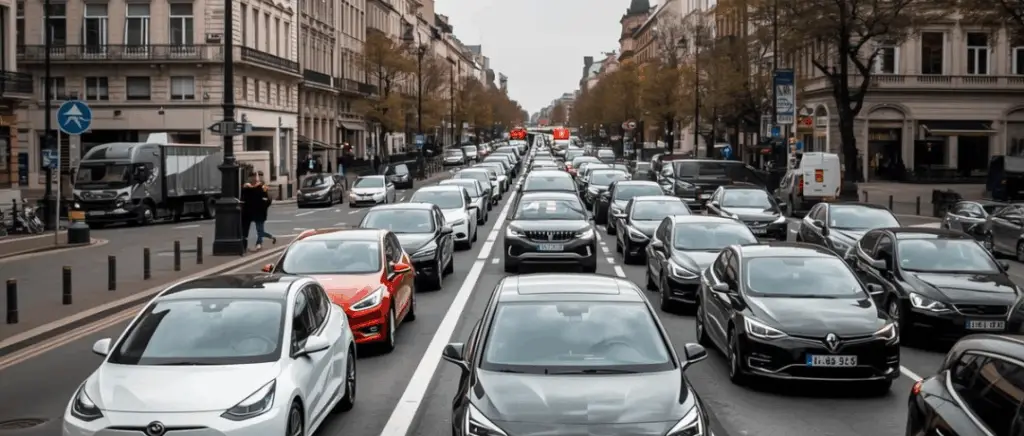Our experts answer your questions with a smile
Monday to Friday 9am - 12.30pm - 2pm - 7pm
A few electricity facts to help you understand recharging power
To understand how electric cars are charged, we need to look at a number of physics concepts, particularly electricity.
La power is a physical quantity, which corresponds to the amount of energy supplied per unit of timeor one second. Its unit is the Watt. Electrical power is equal to voltage multiplied by current.
La voltageexpressed in Voltis the difference in electrical level between two terminals of an electrical system. It allows electrons to pass through.
L'intensityexpressed in Ampèreis the flow of electrons through an electrical circuit at a given time.
If we draw an analogy with a river, the tension would be the difference in altitude between two points that allows the water to flow, while the intensity would be the flow of water.
There are two types of electric current direct current and the alternating current.
In direct current, the electrons all flow continuously from the negative pole to the positive pole.
Direct current is used to supply energy to batteries, and batteries supply direct current to electrical systems.
In alternating current, electrons flow back and forth between the two poles. The frequency of these changes of direction is measured in Hertz (Hz).
Alternating current is used to transport electricity over long distances. The electricity network in France is in alternating current.
How recharging an electric car works
To recharge your batteryThe electric car has two options:
- The car is connected to an external power sourceIn other words, to a socket, a recharging point or another battery.
- Le braking generates electricity to recharge the battery.
Since electricity from the grid is alternating current, and a battery can only be recharged with direct current, electric cars are fitted with a on-board chargerA transformer that converts alternating current into direct current to supply the battery.
If the electric car is powered by a direct current source (which may be the case, we'll tell you more below), the electricity can then be used almost directly to power the battery.
Different types of recharging at different power levels: alternating current and direct current
As explained above, an electric car can be powered by alternating current or direct current to recharge its battery.
Alternating currentThe electricity has to pass through the car's on-board charger to recharge the battery.
This on-board charger is capable of taking maximum power. Note that the more power the on-board charger is able to draw, the more expensive and bulky it is.
To keep prices affordable for electric vehicles, whose production costs are already weighed down by the cost of the battery, carmakers are seeking to limit the power of on-board chargers.
The maximum recharging power for an AC electric car is therefore limited by the car's on-board charger. This aspect is detailed in a paragraph below.
Direct currentWhile electricity can be used almost directly to power the vehicle's battery, it is not as limited by the on-board charger.
However, the alternating current from the electricity grid still has to be transformed into direct current. That's where the charging points come in. The terminals fast or ultra-fast rechargingThese can be found in motorway service areas, for example, and incorporate an AC/DC transformer.
This is why DC fast-charging stations are much more expensive to install than AC charging stations. They incorporate a high-power AC/DC transformer, an expensive piece of equipment.
| Type de Borne | Puissance (kW) | Temps de Charge (à 80%) | Coût Moy. (€ par kWh) |
|---|---|---|---|
|
Slow Recharge Terminal (AC)
|
3-22
|
4-8 hours
|
0,15-0,20
|
|
Fast Recharge Terminal (DC)
|
50-100
|
30-60 min
|
0,25-0,35
|
|
Ultra-Fast Charging Station (DC)
|
150-350
|
10-20 min
|
0,35-0,50
|
|
Very High Power (DC) Charging Station
|
400-500
|
5-10 min
|
0,50-0,70
|
|
Wireless charging station (Inductive)
|
7-22
|
4-8 hours
|
0,20-0,30
|
How powerful are electric recharging points?
Normal charging stations, which recharge with alternating current, are available in 4 standard power ratings:
- 3.7 kW
- 7.4 kW
- 11 kW
- 22 kW
These powers have not been chosen at random; they correspond to distinct amperage levels and two different types of electricity network.
The 3.7 kW and 7.4 kW outputs correspond to alternating current charging on a single-phase electricity network, i.e. with a single phase. This is the most common type of electrical network in France, with more than 80% installed in private homes.
The 3.7 kW terminals can recharge at up to 16 amps. The voltage of the French electricity network is 230 volts, so 230 x 16 = 3680 watts, or 3.7 kW.
The 7.4 kW terminals take a maximum current of 32 A, 230 x 32 = 7360 watts, i.e. 7.4 kW.
The 11 kW and 22 kW charging stations use three-phase electricity networks, in other wordswhich have three phases.
The 11 kW terminals recharge at a maximum intensity of 16 A on the three phases of the electrical network (16 x 230 x 3 = 11,040 W = 11 kW).
The 22 kW terminals recharge at a maximum current of 32 A over the three phases (32 × 230 × 3 = 22,080 W = 22 kW).
The alternating current terminals are for in private homes or in co-ownershipas well as for company car parks to recharge employees' vehicles.
The fast or high-power recharging stations send direct current to vehicles.
Direct current (DC) charging stations start at 25 kW, but the most common are at 50 kW and 100 kW. There are ultra-fast recharging points with a power of up to 350 kW or more, but they are very expensive and, as there are no suitable vehicles available at the moment, they are still very rare.
IONITYEurope's leading ultra-fast recharging network, continues to expand its network in France. In 2024, new stations were installed along the main motorways, notably on the A7 (Autoroute du Soleil) and the A1, linking Paris to the north of France.
What charging power is tolerated by electric cars?
The electric car also determines the power available for recharging, via its on-board charger.
The on-board charger converts alternating current from the electricity grid into direct current to power the bollard. It tolerates a maximum power and can take either single-phase or three-phase current. The recharging point and the vehicle communicate to ensure that the right power is sent to the car to avoid any technical problems.
For example, the new generation of Jaguar I-Pace tolerates a three-phase charging power of 11 kW. If you connect this car to a 22 kW charging point, it will only charge at 11 kW.
On the other hand, if you plug the same car into a 3.7 kW terminal, it will only charge at 3.7 kW.
What impact does the type 2 charging cable have on charging power?
Similarly, the type 2 charging cable used to connect the terminal to the car has an impact on the charging power.
Each charging cable has a maximum charging power.
If we connect an 11 kW cable to a 22 kW charging point, then a car that can tolerate 22 kW of charging power will only charge at 11 kW.
This avoids any risk of the cable overheating when recharging.
What impact does the electrical installation have on charging power?
Finally, the last part of a recharging infrastructure the electricity network of the installation site.
There are charging stations for single-phase or three-phase electrical networks. If the electrical network is single-phase, then a single-phase bollard must be installed. If the electrical network is three-phase, you can install a three-phase bollard or a single-phase bollard.
Individuals and businesses alike are choosing power subscribed of their electricity subscription when they take out an energy supply contract.The contract power is the maximum power that the electrical installation can draw from the electricity network.
Recharging power must not exceed the subscribed power, otherwise the charging point will trip the electrical installation each time it is used. The subscribed power of an electrical installation therefore determines the maximum possible recharging power.
The other equipment connected to the electrical installation also have an influence on the charging power. If other equipment in the electrical installation is consuming electricity, this reduces the charging power available to the charging point.
It is for these reasons that a recharging point installerAlways check the power available from the electrical installation before proposing a recharging solution.
What solutions are there for recharging at the highest power?
Putting in place a energy management optimises charging power.
Energy management means that the bollard's power is controlled by an intelligent system to adapt it to existing constraints, for example depending on what other appliances are switched on in the house or the electricity tariff.
By ensuring that the maximum power tolerated by the electricity network is never exceeded, an energy management system avoids any risk of disconnection.
In conclusion, many factors influence the maximum charging power of an electric car. Calling on the services of a specialist installer means you can recharge at the right power for your use with complete peace of mind.
What legislation exists to encourage the installation of charging points?
Since 2023, new laws and regulations have been introduced in France to encourage the installation of charging stations:
- Climate and Resilience Act The new law requires the installation of charging points in car parks in new or renovated non-residential buildings from 2024.
- ADVENIR system The scheme, which has been extended to 2025, offers subsidies for the installation of charging points in businesses and collective housing.
- Decree of 1 January 2023 The new law makes it compulsory to install recharging points in car parks in shopping centres and office buildings. (Beev).
If you would like to find out more aboutsupport for the installation of charging points for private customers in 2024For more information, see our article on this subject.
